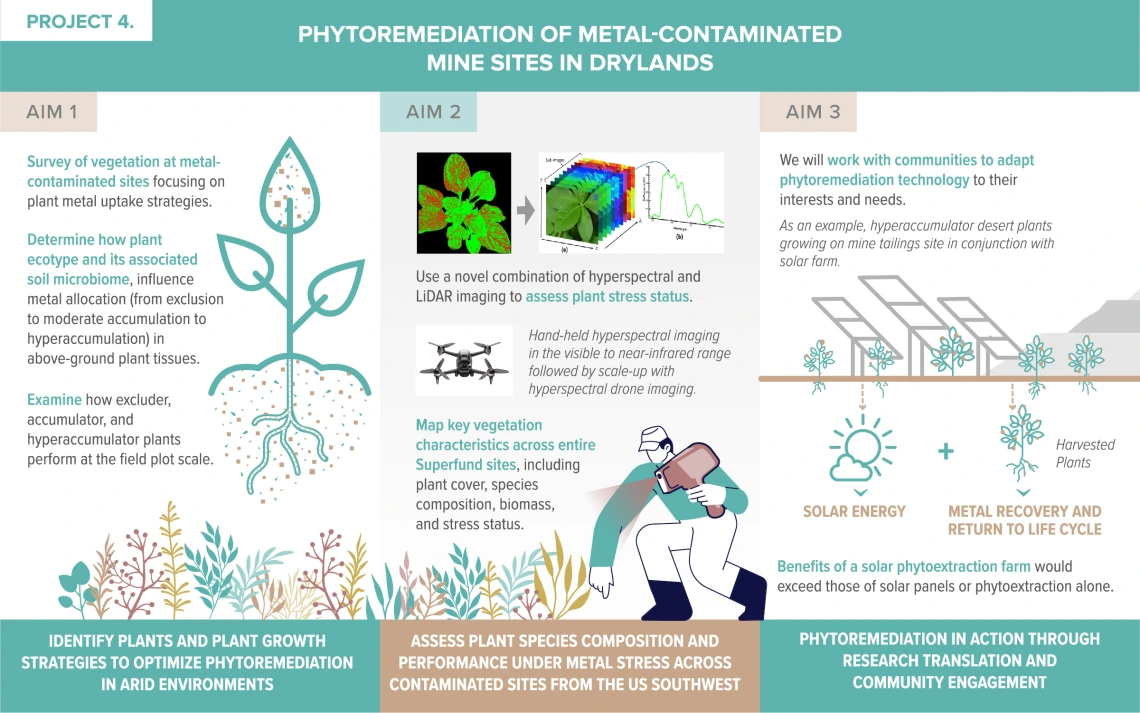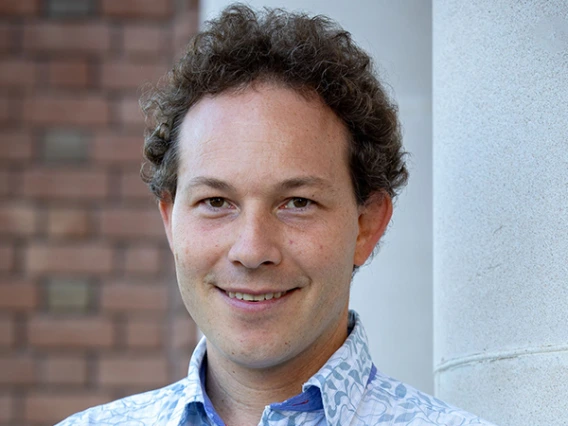
Project Leaders
Summary
The metal-mining industry generated 44% of total toxic waste in the U.S. in 2021, primarily in western dryland ecosystems. This project will develop transformative science to understand and mitigate soil metal contamination and particulate emission from this waste addressing two NIEHS Superfund Research Program Mandates. Mandate 4: reducing the amount and toxicity of hazardous substances is addressed through our focus on phytoremediation of metal-contaminated dryland ecosystems. Successful phytoremediation will result in a vegetation cover that can reduce both wind and water erosion of mine wastes with a concomitant reduction in human and ecosystem exposure to toxic metals. Mandate 3: methods and technologies to detect hazardous substances in the environment is encompassed by our goal to develop technology combining Light Detection and Ranging (LiDAR) and hyperspectral imaging technology to provide enhanced capabilities in detecting plant stress, particularly nutrient deficiency and heavy metal contamination, as well as identifying vegetation productivity and structural changes. If successful, this technology will offer a low-cost approach to rapidly evaluate and map spatial variability across large land areas for planning and prioritizing remediation efforts. The current paradigm for phytoremediation of dryland mine wastes is the use of phytostabilization to immobilize metals in the plant root zone. This approach is currently accepted by the mining industry and regulators as the preferred remediation option, but it implies that a sizeable amount of metals is left unused in the ground. In this continuation proposal we offer an alternative transformative paradigm. We propose using metal hyperaccumulator plants to achieve both a sustainable vegetative cover for metal-contaminated sites and the opportunity for metal recovery. This new paradigm would reduce the need to mine new sources by returning metals that were mined and “disposed” into soils back into the supply chain. Removing metals from a site using this process (phytoextraction) can take decades. We view this as an advantage because phytoremediation has the potential to create jobs and revenue streams for communities affected by mining. After each growing season, metals would be recovered by harvesting and processing the plant biomass. Deliverables from this project will include guidelines and tools for targeted phytoremediation solutions, including an improved understanding of and capacity to spatially quantify metal contamination across Superfund sites to help prioritize areas for remediation. We will work with our Research Translation and Community Engagement Core teams to identify mines and neighboring communities that have an interest in testing and applying these new technologies on their sites.





